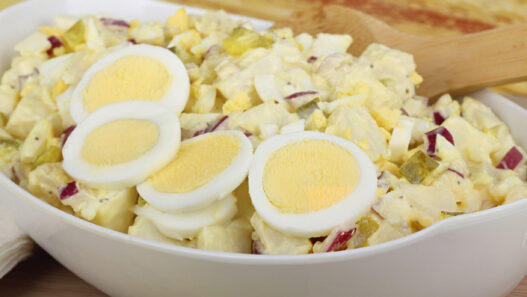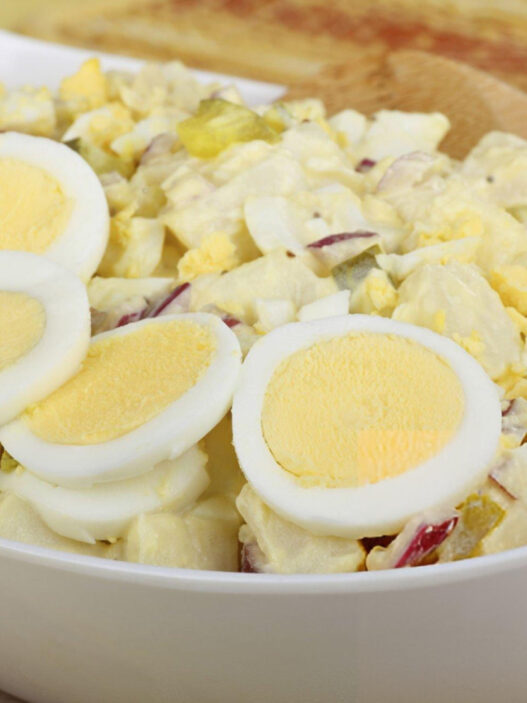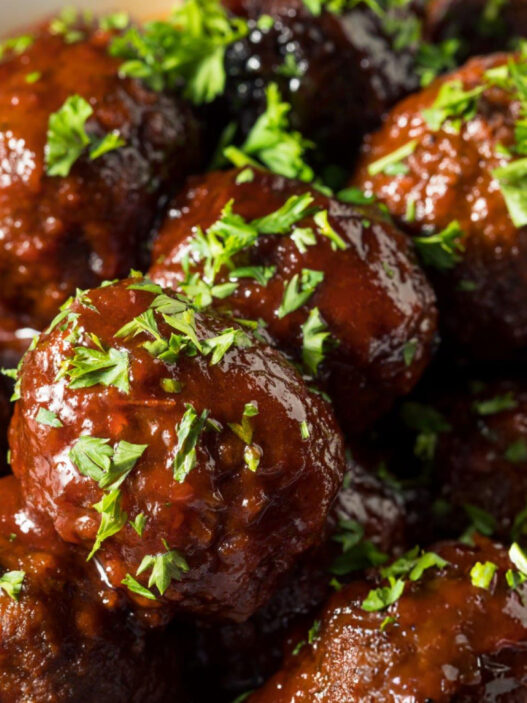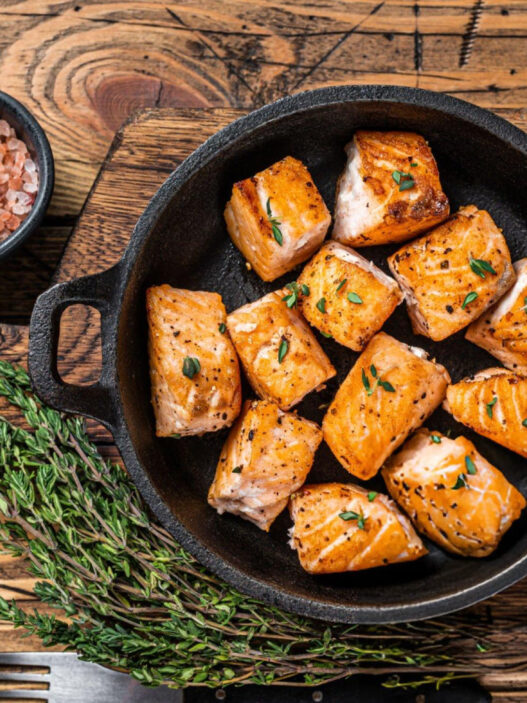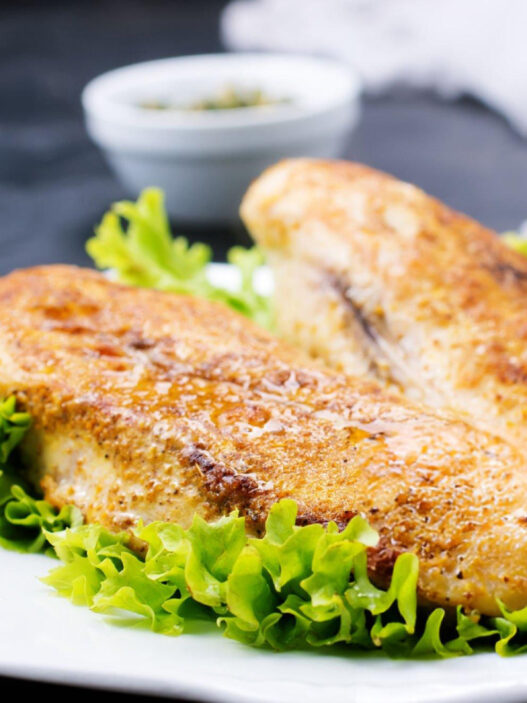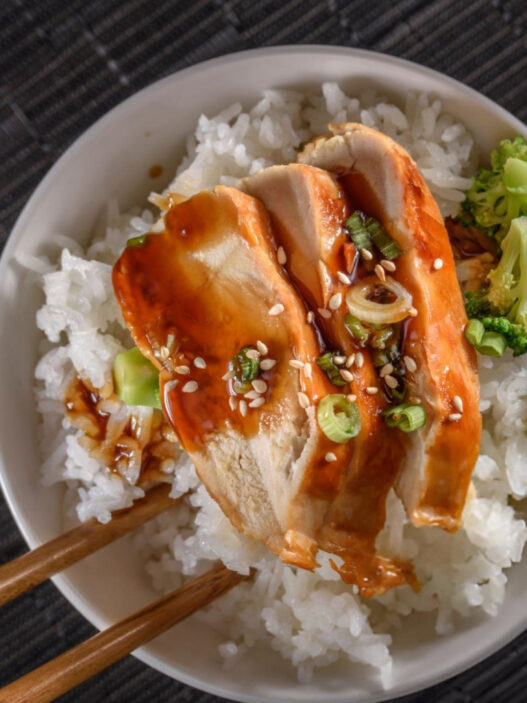A rustic, flavorful loaf packed with hearty grains and nutty sunflower seeds—this sunflower bread is a wholesome addition to any table. Perfectly chewy with a golden crust, it’s a no-knead recipe that brings simplicity and depth to your baking routine. Ideal for everything from breakfast toast to sandwich foundations, its rich texture and balanced flavor make it a home-baked staple.
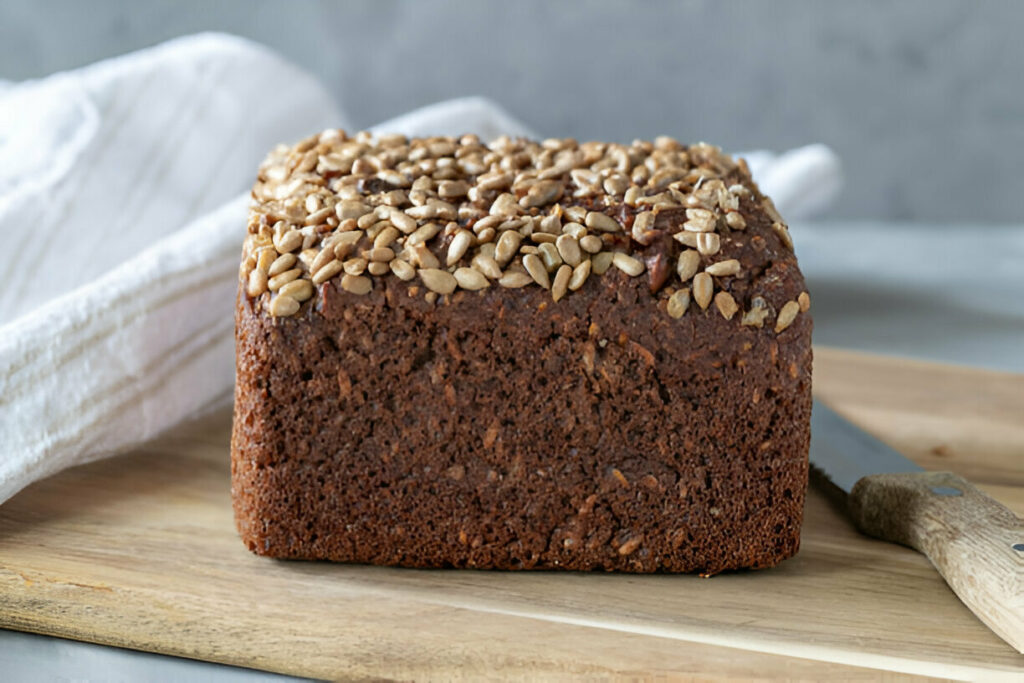
Ingredients Breakdown
This loaf is built on a foundation of robust grains, beginning with a trio of flours—white bread flour for strength, whole wheat flour for hearty density, and rye flour for an earthy undertone. The combination offers structure and chewiness while maintaining a rustic softness. Molasses and honey play a dual role here: they gently sweeten the dough and nourish the yeast during proofing. Toasted, unsalted sunflower seeds fold into the mixture to add crunch and warmth, while a final sprinkle on top delivers visual appeal and extra texture. Active dry yeast lifts the dough, and fine salt rounds out the flavor. A touch of oil is used solely to grease the pan, ensuring a clean release after baking.
Step-by-Step Instructions
A careful method ensures that each bite of this bread turns out tender yet structured, flavorful and consistent throughout.
Begin by combining lukewarm water with molasses and honey in a large bowl. The warmth of the water should be just right—warm to the touch, but not hot. Sprinkle the active dry yeast across the surface and let it rest undisturbed. Within five to ten minutes, you’ll see a creamy, frothy layer forming, a sign the yeast is awake and thriving.
Now it’s time to stir in the white bread flour and whole wheat flour. Use a wooden spoon or heavy-duty spatula and mix until the batter thickens into a texture that resembles pancake batter. Smooth and elastic, this stage is key for building gluten early on, giving the dough its chewy foundation.
Once you’ve achieved that batter consistency, it’s time to add the salt and 1 cup of toasted sunflower seeds. Stir thoroughly to distribute the salt evenly—this not only flavors the dough but helps to tighten the gluten structure. Then, gradually incorporate the rye flour. Add it in two or three portions, stirring with firm, intentional strokes. The dough will grow heavier and stickier with each addition. This is normal. Refrain from reaching for extra flour; this dough is meant to be dense and sticky. Over-flouring will produce a dry, firm crumb.
Grease a 9 x 5-inch loaf pan with oil, making sure to coat the corners well. Transfer the dough into the pan using your spoon, and do your best to spread it out evenly. To finish shaping, wet your hands with water and gently pat the surface to smooth it out.
Sprinkle the remaining sunflower seeds across the top. You may use them raw or toasted, depending on preference. Lightly press them into the dough to ensure they stick and don’t fall off during baking or slicing.
To rise the dough, skip the cling film and instead place the loaf pan inside a clear produce bag. Trap a little air before sealing, ensuring the plastic doesn’t touch the dough’s surface. Let it sit at room temperature for 45 to 60 minutes, or until the dough rises just past the rim of the pan. If needed, you can add more seeds at this stage to fill any patchy areas that appeared during rising.
Bake the loaf in the center of a preheated oven. Start with high heat—450°F (230°C)—for 10 minutes to develop the crust. Then, reduce the oven to 400°F (200°C) and bake for another 30 minutes. The loaf should emerge with a deep golden-brown hue and a firm exterior.
Once baked, let the loaf cool in the pan for 5 to 10 minutes. Carefully remove it while it’s still hot and transfer it to a wire rack. Allow it to cool completely before slicing. This resting period helps the crumb firm up and prevents a gummy interior.
For best results, let the loaf sit overnight or up to two days before slicing. The texture settles beautifully, and the flavors continue to develop.
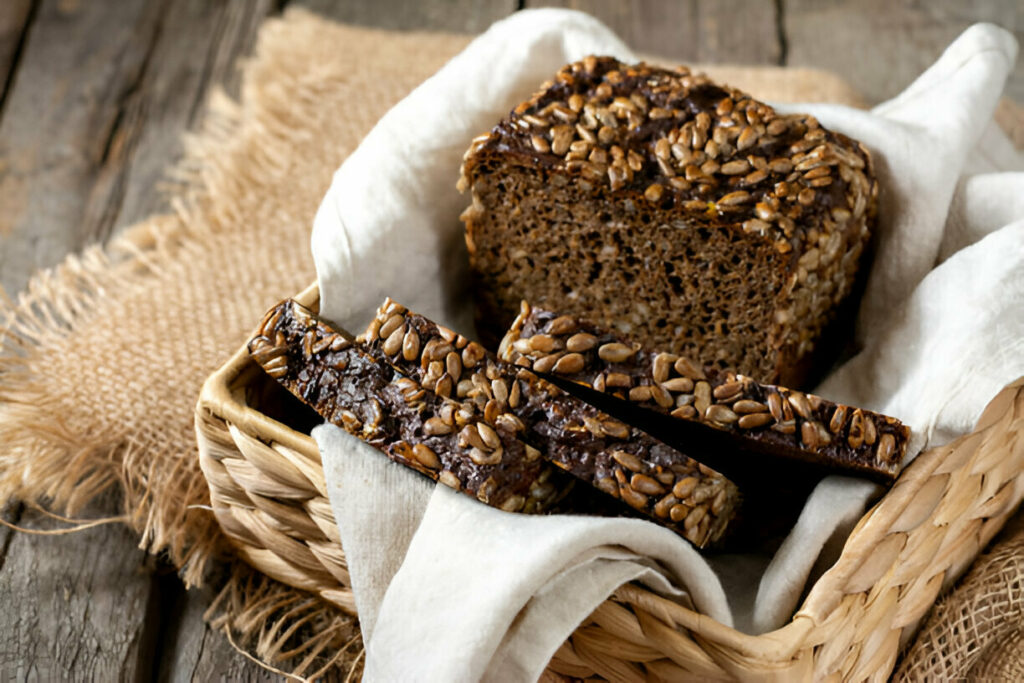
Recipe Tips
Avoiding common pitfalls with sticky dough
Expect the dough to be tacky and heavy. Don’t be tempted to add more flour—embracing the stickiness ensures a moist, chewy crumb.
Why you shouldn’t add extra flour, even if tempted
Extra flour will result in a dense, dry loaf. The hydration level is intentionally high to support the rye and whole wheat components.
The best time to slice for clean, even cuts
Wait until the loaf is completely cool. Better yet, let it sit overnight or slice on the second or third day for the cleanest cuts.
Storing without plastic wrap to preserve the crust
Use wax paper or a bread box. Avoid cling wrap as it traps moisture and softens the crust.
What to Serve With This Recipe
Sunflower bread pairs beautifully with both savory and sweet accompaniments. Try it with a soft, spreadable cheese like goat cheese or brie, paired with thinly sliced tomatoes or cucumbers for a refreshing snack. For heartier meals, turn it into sandwiches layered with smoked salmon, creamy hummus, or roasted vegetables. At breakfast, toast a slice and top with almond butter and honey, or simply butter and jam for a comforting start to your day. The nutty undertones from the sunflower seeds enhance both subtle and bold toppings.
Frequently Asked Questions
Can I substitute the flours in this recipe?
You can swap flours, but results will vary. White bread flour can be replaced with all-purpose, but avoid removing rye or whole wheat entirely, as they define the loaf’s character.
How do I know when the bread has fully risen?
The dough should rise to the top of the pan or just slightly above. If pressed gently with a wet fingertip, the indentation should slowly spring back.
What should I do if my dough seems too wet or too dry?
A sticky dough is expected. If it’s excessively runny, your flour may be under-measured. Add rye flour in small amounts until it thickens slightly—but don’t overdo it.
How long does the bread stay fresh after baking?
Stored properly in wax paper or a bread box, it stays fresh for up to five days. The texture improves after the first day.
Can I freeze this bread for later use?
Yes. Slice the loaf after cooling, wrap portions in parchment, and freeze in airtight bags. Toast straight from frozen for convenience.
Sunflower bread delivers texture, flavor, and ease in every bite. Whether you enjoy it fresh or a few days later, this loaf brings rustic charm and versatility to your homemade bread lineup. Its earthy undertones, nutty crust, and hearty structure make it a rewarding bake that’s equally satisfying on a breakfast table or as the centerpiece of a gourmet sandwich.
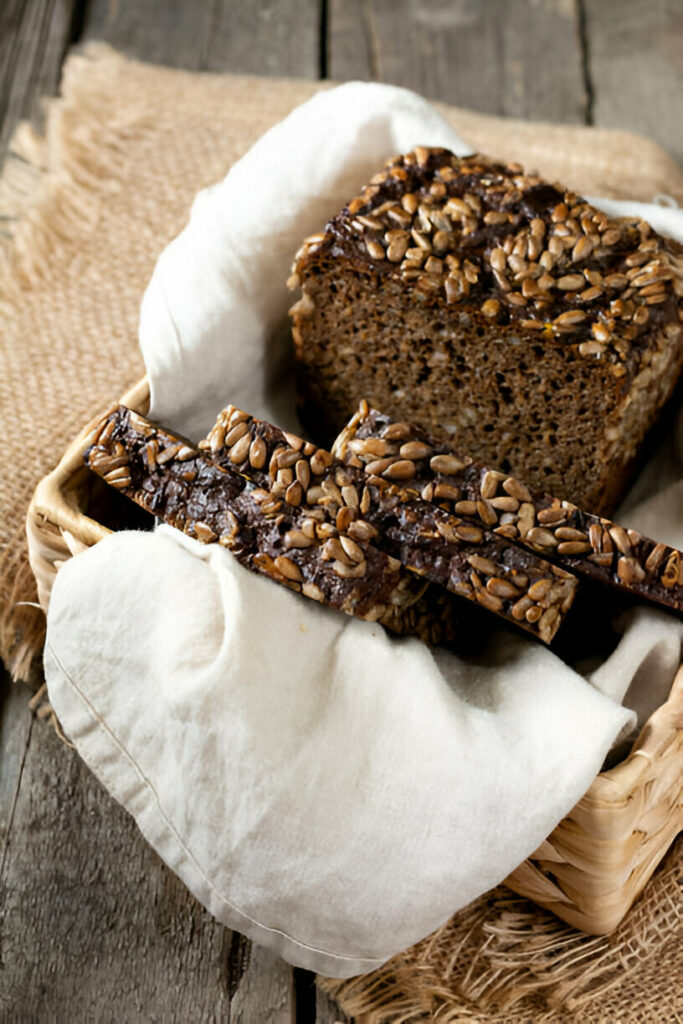
Ingredients
1 cup (140 g) toasted, unsalted sunflower seeds + ¼ cup (35 g) for topping
2 1/8 cups (510 ml) lukewarm water
2 ¼ teaspoons (7 g) active dry yeast
1 tablespoon (18 g) honey
1 tablespoon (18 g) molasses (honey can be used instead)
3 teaspoons (18 g) fine salt
180 g rye flour (approximately 1 ½ cups)*
220 g whole wheat flour (approximately 1 ¾ cups)*
180 g white bread flour (approximately 1 ¼ cups)
Oil for greasing the loaf pan
Instructions
Begin by combining the lukewarm water with the molasses and honey in a large mixing bowl. Sprinkle the active dry yeast over the liquid and allow it to rest for about 5 to 10 minutes, or until a frothy, creamy layer forms on the surface.
Add in the white bread flour and whole wheat flour. Using a sturdy cooking spoon, stir vigorously until the mixture takes on a thick, pancake batter-like consistency. Once the mixture is smooth, incorporate the salt and 1 cup of the toasted sunflower seeds, stirring until evenly distributed.
Next, gradually add the rye flour in two or three additions. Switch from a whisk to a strong cooking spoon, stirring with effort to thoroughly incorporate the flour. Be sure there are no dry pockets or flour clumps stuck to the bottom of the bowl. The dough will be dense and sticky—resist the urge to add more flour, as doing so may result in a dense and heavy loaf.
Lightly grease a 9 x 5-inch loaf pan with oil. Transfer the sticky dough into the pan, smoothing the surface as best you can with your spoon. Wet your hands with water and gently pat down the top to create an even surface.
Sprinkle the remaining ¼ cup of sunflower seeds over the top of the dough. Whether using toasted or raw seeds, press them lightly into the surface to ensure they adhere.
Cover the pan and allow the dough to rise for 45 to 60 minutes, or until it reaches the top of the loaf pan or slightly overflows. For an effective rising method, place the entire pan inside a clear produce bag, trap some air inside, and seal it shut—just make sure the bag doesn’t touch the dough.
Once risen, the dough may have bare spots where seeds shifted during rising. If desired, lightly sprinkle a few extra sunflower seeds on top and gently press them in.
Preheat the oven and bake the bread on the center rack. Start at 450°F (230°C) for 10 minutes, then reduce the temperature to 400°F (200°C) and continue baking for an additional 30 minutes, until the crust develops a deep golden-brown color.
Once baked, allow the loaf to cool for 5 to 10 minutes in the pan. Carefully remove it while still hot and place it on a wire rack to cool completely. Cutting the bread too soon may result in a gummy texture inside.
This bread develops its best texture and flavor by the second or third day. Once cooled, store in a bread box or wrap tightly in wax paper—avoid using plastic wrap to maintain the crust’s integrity.
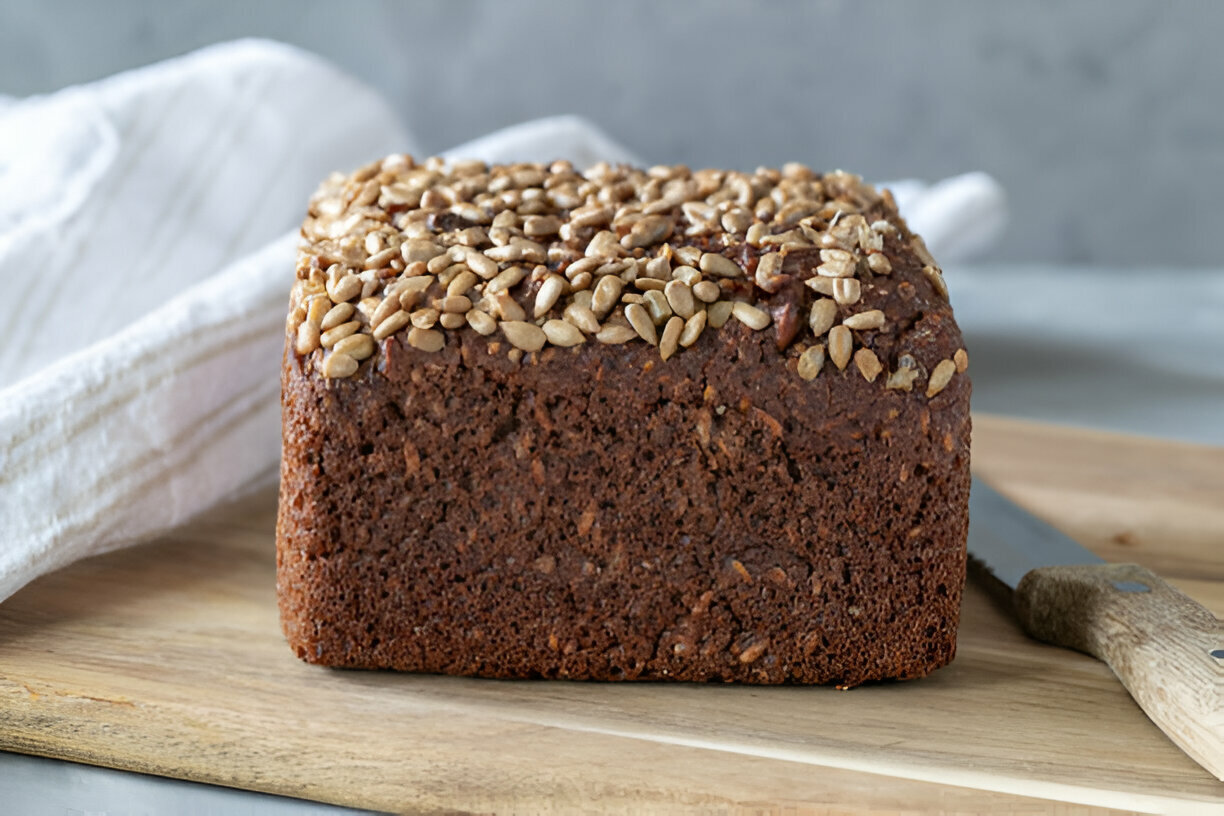
Sunflower Bread Recipe
Ingredients
- 1 cup 140 g toasted, unsalted sunflower seeds + ¼ cup (35 g) for topping
- 2 1/8 cups 510 ml lukewarm water
- 2 ¼ teaspoons 7 g active dry yeast
- 1 tablespoon 18 g honey
- 1 tablespoon 18 g molasses (honey can be used instead)
- 3 teaspoons 18 g fine salt
- 180 g rye flour approximately 1 ½ cups*
- 220 g whole wheat flour approximately 1 ¾ cups*
- 180 g white bread flour approximately 1 ¼ cups
- Oil for greasing the loaf pan
Instructions
- Begin by combining the lukewarm water with the molasses and honey in a large mixing bowl. Sprinkle the active dry yeast over the liquid and allow it to rest for about 5 to 10 minutes, or until a frothy, creamy layer forms on the surface.
- Add in the white bread flour and whole wheat flour. Using a sturdy cooking spoon, stir vigorously until the mixture takes on a thick, pancake batter-like consistency. Once the mixture is smooth, incorporate the salt and 1 cup of the toasted sunflower seeds, stirring until evenly distributed.
- Next, gradually add the rye flour in two or three additions. Switch from a whisk to a strong cooking spoon, stirring with effort to thoroughly incorporate the flour. Be sure there are no dry pockets or flour clumps stuck to the bottom of the bowl. The dough will be dense and sticky—resist the urge to add more flour, as doing so may result in a dense and heavy loaf.
- Lightly grease a 9 x 5-inch loaf pan with oil. Transfer the sticky dough into the pan, smoothing the surface as best you can with your spoon. Wet your hands with water and gently pat down the top to create an even surface.
- Sprinkle the remaining ¼ cup of sunflower seeds over the top of the dough. Whether using toasted or raw seeds, press them lightly into the surface to ensure they adhere.
- Cover the pan and allow the dough to rise for 45 to 60 minutes, or until it reaches the top of the loaf pan or slightly overflows. For an effective rising method, place the entire pan inside a clear produce bag, trap some air inside, and seal it shut—just make sure the bag doesn’t touch the dough.
- Once risen, the dough may have bare spots where seeds shifted during rising. If desired, lightly sprinkle a few extra sunflower seeds on top and gently press them in.
- Preheat the oven and bake the bread on the center rack. Start at 450°F (230°C) for 10 minutes, then reduce the temperature to 400°F (200°C) and continue baking for an additional 30 minutes, until the crust develops a deep golden-brown color.
- Once baked, allow the loaf to cool for 5 to 10 minutes in the pan. Carefully remove it while still hot and place it on a wire rack to cool completely. Cutting the bread too soon may result in a gummy texture inside.
- This bread develops its best texture and flavor by the second or third day. Once cooled, store in a bread box or wrap tightly in wax paper—avoid using plastic wrap to maintain the crust’s integrity.

